Why Do My Legs Shake When I Squat?
Author:
Reviewed by:
(21 years of Oly Lifting experience)
Unlock your full potential by engaging with our experts and community! Have questions about your fitness journey or looking for expert advice on weightlifting techniques? Don’t hesitate — leave a comment below and Sergii Putsov will provide a personalized answer and insights to help you reach your goals.
Torokhtiy is reader-supported. Some links are affiliate links, and we may earn a commission at no extra cost to you. See our disclosure page for details.
Whether you’ve recently added squats to your lower-body workout routine, or simply never figured out how to nail the perfect squat, chances are you ask yourself this question: “Why do my legs shake when I squat?”. If that’s a recurring thought for you on leg days, this article is for you. We’re looking at some likely causes of shaky legs during squatting, as well as the tips to achieve rock-solid stability. Let’s get into it.
Why do my legs shake when I squat? Some common reasons include poor technique, muscular imbalances, dehydration, lack of energy, or being new to the exercise. Legs can also start shaking near the end of a high-rep set of squats, especially when training till or near muscular failure.
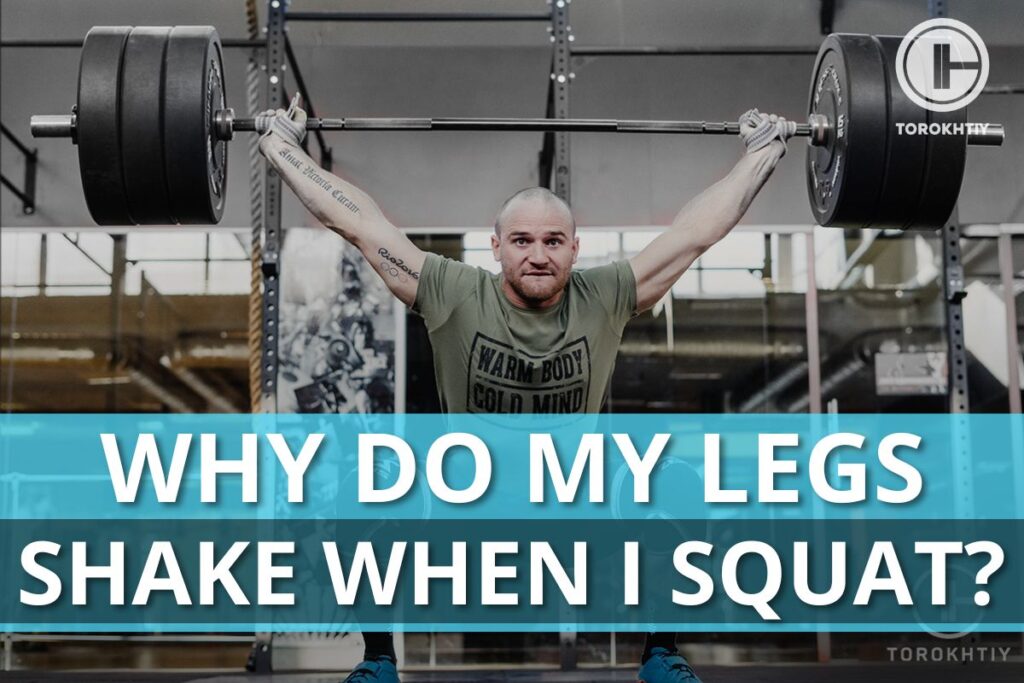
6 Key Reasons Why Your Legs Shake During Squats
1. Balance Issues Overall
If your legs shake when squatting only, we can almost certainly say there’s a lack of balance overall. If it were a tremor or another neurological issue causing it, you’d also have shaky legs even when standing.
The squat, being a compound movement, relies on your joints to help maintain your control and balance throughout the movement. The heavier the weight you’re repping, the higher the demand for stability and balance.
Even a slight imbalance or weakness in the supporting muscles can lead to difficulty achieving and maintaining proper form. Even if you manage to hold it for the first few reps, it may get compromised toward the end of the set when the muscles aren’t at their strongest.
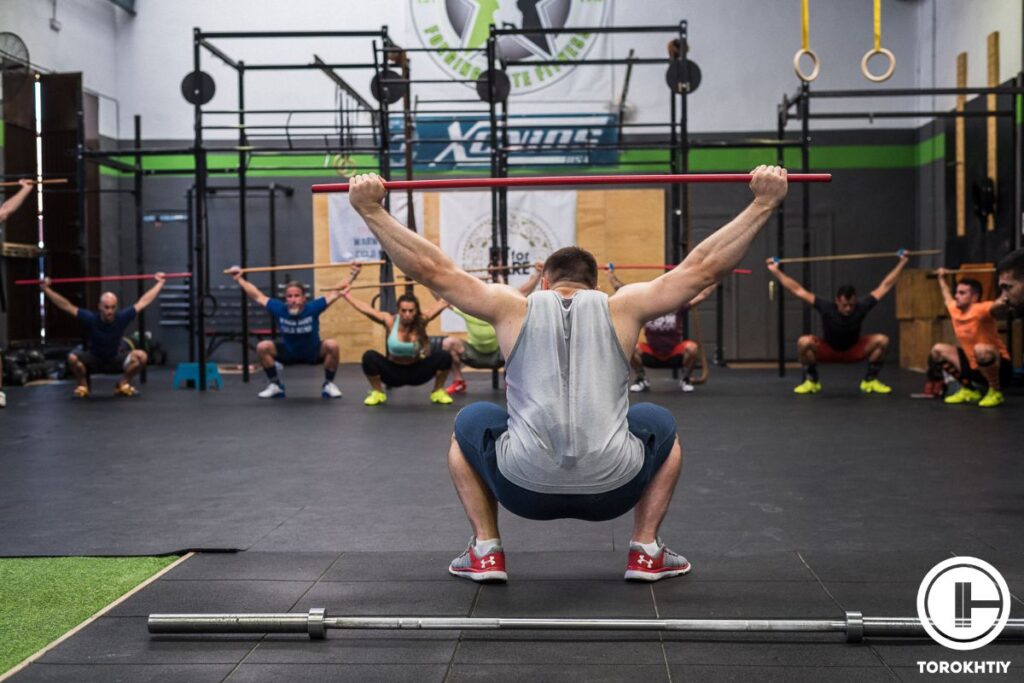
So, your general goal to improve stability should be to strengthen the stabilizing muscles that support your joints. Like all other muscles, they will grow with progressive overload as long as you manage to maintain the right technique throughout your sets — even if that means dropping the weight for now.
Some great exercises to boost the strength in these stabilizing muscles include step-ups, lunges, and machine leg extensions.
2. Lack of Balance in Hips
As discussed above, a variety of muscle groups get involved in supporting your movement throughout each squat rep. However, some play more of a direct role than others. Your hip extensors (hamstrings, glutes, and hip abductors) and quads are primarily responsible for taking most of the heat during a squat. Your core muscles, on the other hand, play a secondary role in stabilizing your spine and posture.
A lack of balance in these muscles may lead to shaky legs and also heightens musculoskeletal injury risks. For instance, say a lifter has considerably stronger hip extensors than the quads (knee extensors) or vice versa. When this happens, one of the muscles inevitably gets fatigued earlier than the other. This leads to instability and a lack of support that may creep in toward the latter half of your set.
3. Imbalance In Core Muscles
Following the example shared above, the same concept applies to your secondary (within the context of a squat) muscles. Your core plays an essential role in stabilizing your squat.
But just like your hip extensors can be relatively weaker than your quads (and vice versa), your core muscles can also have imbalances that are detrimental to your squat stability.
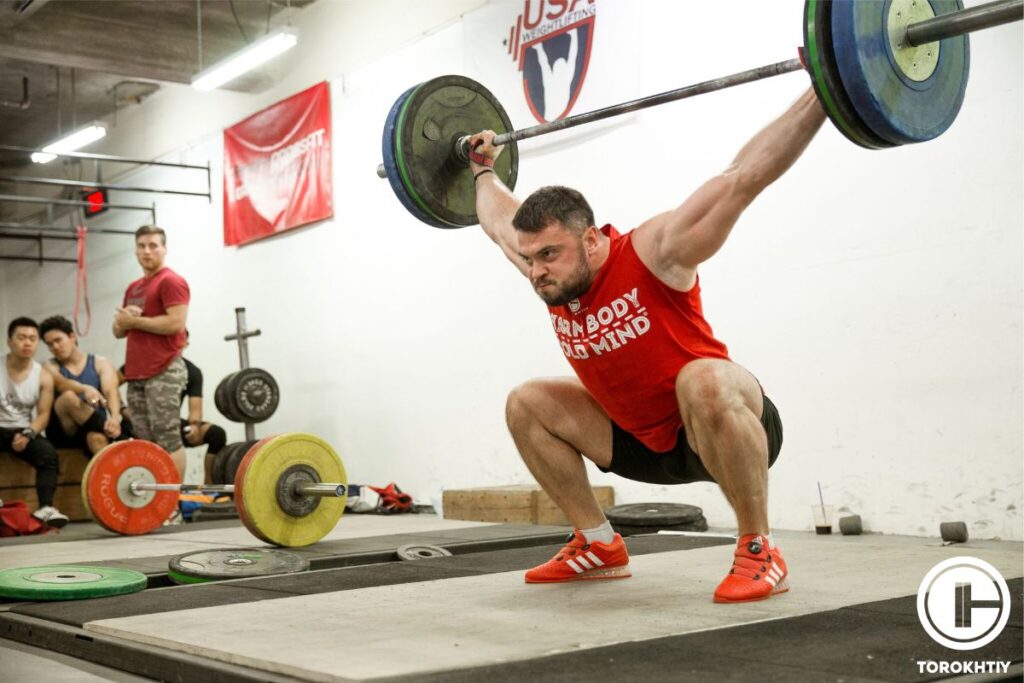
Weaknesses in your abdominal or lower back muscles can lead to issues with spinal cord positioning, posture, and bracing. This compromises your form and may cause your legs to shake out of fatigue or instability.
4. Shaking Legs After Tough Workout
Shaky legs during a squat can be caused by many factors. On some days, the issue might be as simple as exhaustion after an intense session.
How many times have you caught your legs shaking after a killer lower-body workout? It could happen even while you’re resting if your last set was intense enough. If you squat heavy in this state, you simply can’t expect your exhausted legs to remain firmly grounded.
Try placing your squats in the earlier half of your leg-day routine to avoid this problem. You may even consider starting with the squat since it’s such a demanding compound movement.
Follow us!

Free!
Get a 2-week Weightlifting Program as a bonus for the subscription to kickstart your training plan!

Free!
5. Fatigue and Recovery
Fatigue is a factor that applies to beginners and Olympic champions alike. No matter how perfect your squat form might be, your muscles will get fatigued after an intense workout session. After that, your body needs sufficient recovery time to rebuild. Make sure to adequately space out your workouts.
Without an appropriate gap between them, your muscles won’t be at their 100%, inevitably leading to issues with your form and technique. In that case, shaky legs would be the least of your concerns since you’d also be dealing with long-term injury risks.
6. Insufficient Food or Fluid Intake
Last but not least, your shaky legs may just be a consequence of a lack of fuel. Your body doesn’t just need time to recover between workouts, but also demands lots of energy with proper nutrition, and sufficient hydration.
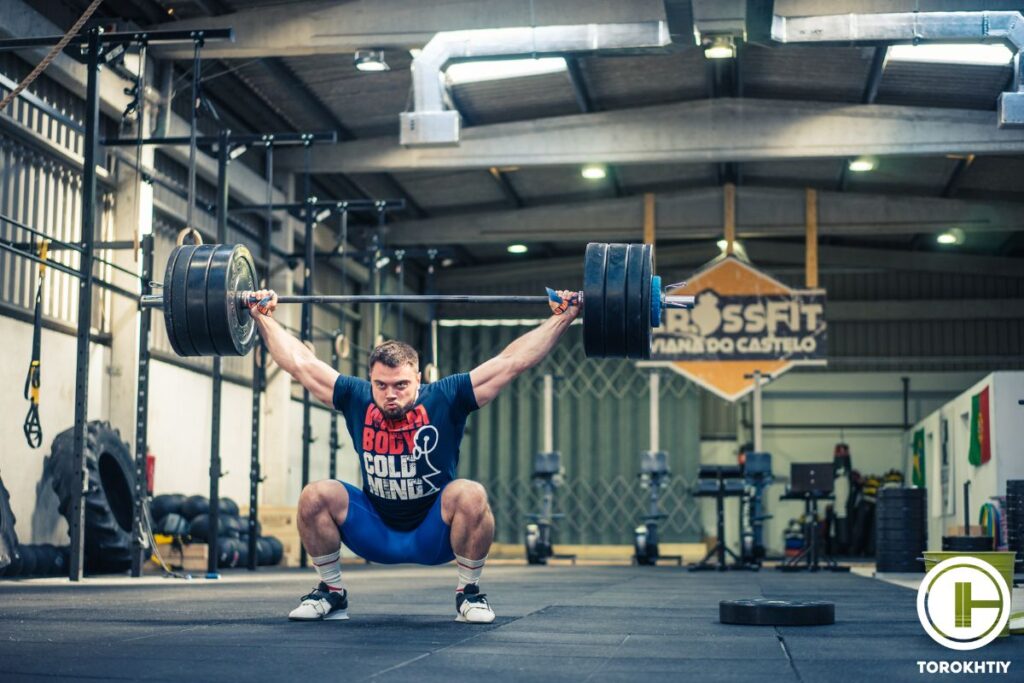
Make sure you’re eating, drinking, and sleeping well to allow your muscles to rebuild and recover. Without proper recovery, your muscles will never be at their best which leads to weaker, unstable, and shaky squats.
🔻GET A FREE PROGRAM DEMO: 12 Week Squat Program by Oleksiy Torokhtiy
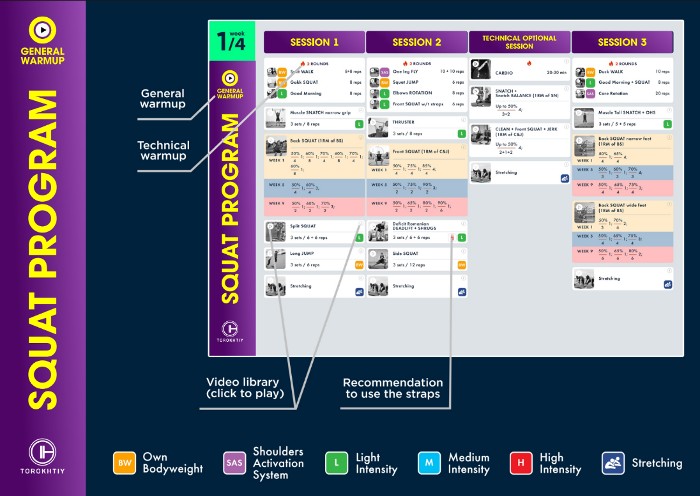
Do you want to double your squat strength? In just 12 weeks, you’ll be able to boost your squat results.
Enter your details and get a free demo (1 free week) of the squat program straight into your inbox.
4 Tips To Fix Leg Shaking When Squatting
Let’s now look at some key tips that may be helpful if your legs or knees shake when squatting. We’ll look at 5 ways to counter common causes like the ones discussed above.
1. Eliminate Muscular Imbalances
Muscular imbalances can occur side to side, or among different muscles that work harmoniously to support your movement during a squat. We talked about the hip extensors and your quads, for instance, and how one of them being weaker than the other can lead to shaky legs.
You can address this issue by strengthening your weaker muscles with targeted exercises aside from the squat. For instance, you can do split squats to make your quads and glutes stronger simultaneously. Single-leg hip thrusts are an excellent glute-focused exercise that can be a massive help to your unilateral stability.
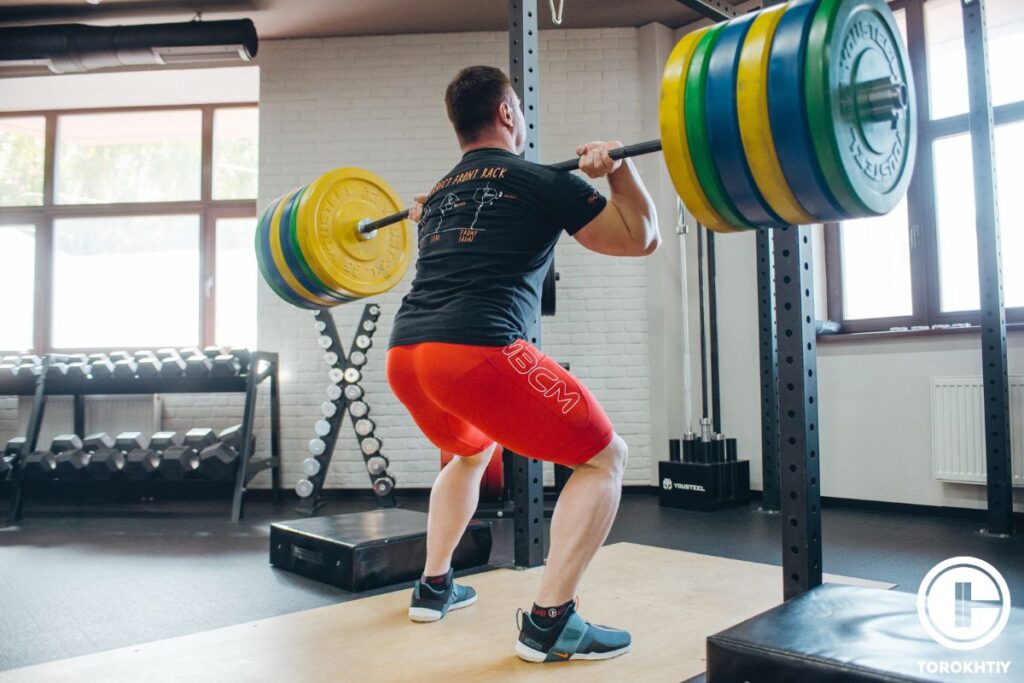
Similarly, Copenhagen planks are great for strengthening your hip abductors which are key to maintaining stability throughout the squat (especially at the bottom). Besides stronger legs, you also need a solid core to aid your stability and balance in all your workouts.
Being primarily responsible for supporting your spine, your core muscles play an immense role in a squat. Remember to incorporate exercises that target your core muscles specifically, such as ab crunches and lower back hyperextensions.
2. Work On Your Alignment
Shaky legs can also be due to poor form. Make sure you start your squat with your knees and hips properly aligned, and hold it firmly throughout the set to maintain stability in your stance.
Do not let your knees cave in, extend forward, or spring out extensively. These knee behavioral issues in your squat will cause you to lose your alignment, leading to unnecessary joint strain, shakiness, and instability.
3. Prioritize Recovery
Pushing yourself hard on a leg day is great, but it’s just as important to let your body recover from it before another gruesome day of squatting heavy. Make sure to have long enough breaks between your leg days to avoid overexertion and fatigue buildup.
In addition to sufficient rest between workouts, also remember to take a long enough break between your sets. This ensures optimum performance, maximizes your strength gains, and helps you make the most out of the exercise.
It’s very easy to rest too little, but very difficult to rest too long. — Davis Diley
4. Fuel Up Before Your Workout
Your body needs carbohydrates as fuel for optimal performance during the workout. That’s especially true for large muscle groups like your glutes, hamstrings, and quads. These require tons of energy to operate at peak performance during heavy-duty compound movements like the squat.
In addition to generally eating a balanced diet between your workouts, try to have a high-carb meal about 2-3 hours before training. You can also have a high-carb treat about half an hour before your workout. According to this study, “ingesting carbohydrates 30 min before exercise led to greater increases in exercise capacity.”
Also, make sure you’re sufficiently hydrated by drinking 2-4 glasses of water within this time frame as well.
Since you’d be sweating profusely in an intense squat session, be sure to carry a bottle of water in the gym to rehydrate between sets.
FAQ
How Do I Stop My Knees From Shaking When I Squat?
A. Maintain proper alignment between your knees and hips and focus on strengthening your leg muscles through targeted exercises. Some examples are lunges, split squats, leg presses, hip thrusts, and Copenhagen planks. Improve your squat form and stability by practicing bodyweight squats regularly.
Is It Normal for Legs to Shake During a Leg Workout?
Yes, it’s normal for legs to shake during a workout, especially if you’re challenging your muscles. Shaking can indicate muscle fatigue and the effort to maintain stability. However, if shaking arises due to bad form, try correcting your mistakes on your own or consult a fitness expert to assess your technique and routine.
Conclusion
To wrap things up, shaky legs when you squat can be due to many reasons. It can indicate issues like poor technique, excessive fatigue, poor technique, muscular imbalances, insufficient food intake, or dehydration. On the other hand, it may just be a positive sign of having pushed hard enough in the gym — assuming none of the issues highlighted above apply to you.
In any case, we hope you can apply the tips shared in this article to your workout plan, recovery cycles, and even your diet to make your squat more stable than ever.
If you have any questions or any tips you’d like to share on the subject, please feel free to leave them in the comments. Thanks for reading this article to the very end. Happy squatting!
Also Read:
- Why Do My Legs Hurt So Much After I Do Squats?
- Squat or Deadlift First: What Is the Ideal Sequence?
- Squat Bar Placement: Does It Matter?
- Shoulder Pain When Squatting: Causes & Prevention
- Is a 225 lbs Squat Good?
- Is 315 lbs A Good Squat: Decoding Gym Benchmarks
- Can You Squat Every Day Safely?
- 5 Best Squat Alternatives For Bad Knees
- 12 Exercises To Improve Squat Strength & Form
- 10 Best Squat Alternatives For Bad Back (CPT Recommended)
References:
- Roberto Erro, Kailash P. Bhatia, Carla Cordivari. “Shaking on Standing: A Critical Review,” National Library of Medicine, https://www.ncbi.nlm.nih.gov/pmc/articles/PMC6183256/ (2014 Sep).
- Jamil R. Neme. “Balancing Act: Muscle Imbalance Effects on Musculoskeletal Injuries,” National Library of Medicine, https://www.ncbi.nlm.nih.gov/pmc/articles/PMC9324710/ (2022 May-Jun).
- Thomas Nesser, Neil Fleming. “Activation of Selected Core Muscles during Squatting,” ResearchGate, https://www.researchgate.net/publication/301235846_Activation_of_Selected_Core_Muscles_during_Squatting (January 2016)
- Mark McKean, Brendan Burkett. “Knee Behavior in Squatting,” ResearchGate, https://www.researchgate.net/publication/230555159_KNEE_BEHAVIOUR_IN_SQUATTING (June 2012).
- Chad M. Kerksick, Shawn Arent, Brad J. Schoenfeld, Jeffrey R. Stout, Bill Campbell, Colin D. Wilborn, Lem Taylor, Doug Kalman, Abbie E. Smith-Ryan, Richard B. Kreider, Darryn Willoughby, Paul J. Arciero, Trisha A. VanDusseldorp, Michael J. Ormsbee, Robert Wildman, Mike Greenwood, Tim N. Ziegenfuss, Alan A. Aragon, and Jose Antonio. “International society of sports nutrition position stand: nutrient timing,” National Library of Medicine, https://www.ncbi.nlm.nih.gov/pmc/articles/PMC5596471/ (2017 Aug 29).
Why Trust Us?
With over 20 years in Olympic weightlifting, strength training, nutrition coaching, and general fitness our team does its best to provide the audience with ultimate support and meet the needs and requirements of advanced athletes and professional lifters, as well as people who strive to open new opportunities and develop their physical capabilities with us.
By trusting the recommendations of our certified experts in coaching, nutrition, and sports training programming, as well as scientific consultants, and physiotherapists, we provide you with thorough, well-considered, and scientifically proven content. All the information given in the articles concerning workout programming, separate exercises, and athletic performance, in general, is based on verified data.
The product testing process is described in more detail here.
Author: Sergii Putsov
Head of Sport Science, PhD
Best Results: Snatch – 165 kg,
C&J – 200 kg
Sergii Putsov, Ph.D., is a former professional weightlifter and National team member, achieving multiple medals in the 94 kg weight category at national competitions. With a Master’s degree in “Olympic & Professional Sport Training” and a Sport Science Ph.D. from the International Olympic Academy, Greece, Sergii now leads as the Head of Sport Science. He specializes in designing training programs, writing insightful blog articles, providing live commentary at international weightlifting events, and conducting educational seminars worldwide alongside Olympic weightlifting expert Oleksiy Torokhtiy.
Reviewed by: Oleksiy Torokhtiy
Olympic Weightlifting Champion, PhD in Sport Science
Best Results: Snatch – 200 kg,
C&J – 240 kg
Oleksiy Torokhtiy is a professional athlete boasting 20 years of experience in Olympic weightlifting. With multiple European and World titles under his belt, he has showcased his prowess in two Olympic Games (Beijing 2008 and London 2012). Upon concluding his illustrious career, Oleksiy dedicated himself to coaching. By 2022, he had conducted over 200 weightlifting seminars worldwide. He is the visionary behind an international sportswear and accessories brand known for its motto, “Warm Body Cold Mind.” Additionally, he is an esteemed author and the creator of a series of training programs and eBooks.




Still have questions after reading our article? Unlock your full potential by engaging with our experts and community! Don’t hesitate — leave a comment below and Sergii Putsov will provide a personalized answer and insights to help you reach your goals.